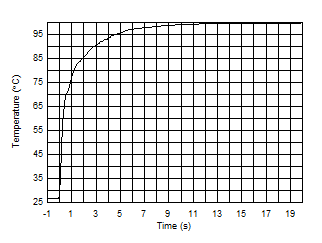SBOS581B September 2011 – June 2022 TMP100-Q1 , TMP101-Q1
PRODUCTION DATA
- 1 Features
- 2 Applications
- 3 Description
- 4 Revision History
- 5 Pin Configuration and Functions
- 6 Specifications
-
7 Detailed Description
- 7.1 Overview
- 7.2 Functional Block Diagram
- 7.3
Feature Description
- 7.3.1 Digital Temperature Output
- 7.3.2 Serial Interface
- 7.3.3 Bus Overview
- 7.3.4 Serial Bus Address
- 7.3.5 Writing and Reading to the TMP100-Q1 and TMP101-Q1
- 7.3.6 Target Mode Operations
- 7.3.7 SMBus Alert Function
- 7.3.8 General Call
- 7.3.9 High-Speed Mode
- 7.3.10 POR (Power-On Reset)
- 7.3.11 Timing Diagrams
- 7.4 Device Functional Modes
- 7.5 Programming
- 8 Application and Implementation
- 9 Power Supply Recommendations
- 10Layout
- 11Device and Documentation Support
- 12Mechanical, Packaging, and Orderable Information
Package Options
Mechanical Data (Package|Pins)
- DBV|6
Thermal pad, mechanical data (Package|Pins)
Orderable Information
8.2.3 Application Curve
Figure 8-3 shows the step response of the TMP100-Q1 and TMP101-Q1 devices to a submersion in an oil bath of 100°C from room temperature (27°C). The time constant, or the time for the output to reach 63% of the input step, is 0.9 s. The time-constant result depends on the PCB that the TMP100-Q1 and TMP101-Q1 devices are mounted. For this test, the TMP100-Q1 and TMP101-Q1 devices are soldered to a two-layer PCB that measures 0.375 inch × 0.437 inch.
 Figure 8-3 Temperature Step Response
Figure 8-3 Temperature Step Response